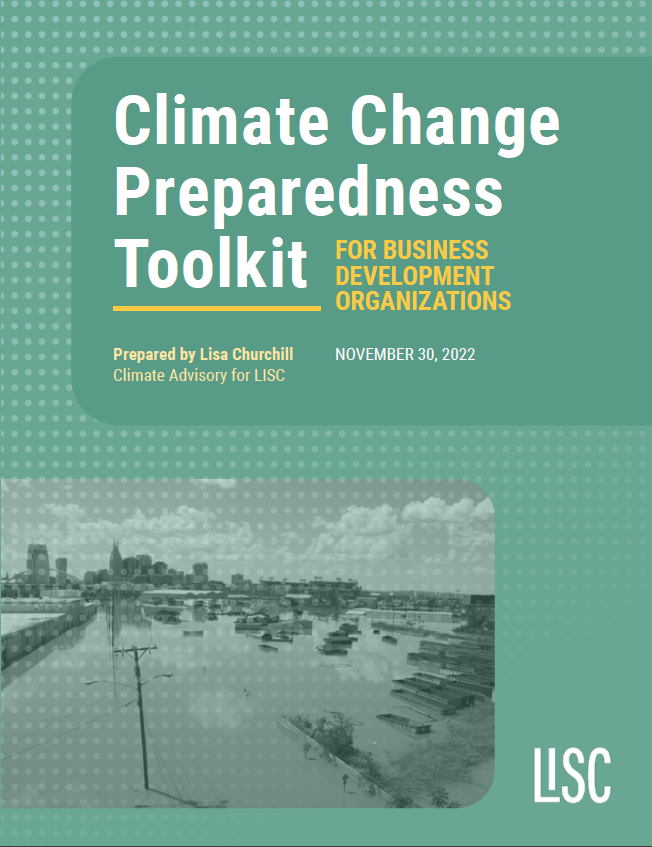Climate Change Preparedness Toolkit for Business Development Organizations
This guide is intended to support small business owners in both developing a business continuity plan, as well as creating a culture that allows for innovations and transformations. Recognizing that business owners have a lot to consider in their daily operations, the guide has been organized to be accessible and concise. Additional resources are provided in the appendix for those who may wish to do a deeper dive on particular subjects. It is also accompanied by a training module, including a slide deck with talking points, that can be used to educate and train others.
In this guide, we will focus our discussions on climate change as the main hazard as a way to frame the overall process. Similar processes can be used for other types of hazards and Section 7 outlines additional resources that users can consult for an all-hazards assessment.
Introduction
The importance of business continuity
99.9 percent of all businesses in the US are classified as “small businesses” (U.S. Small Business Administration, 2020). Small businesses often operate out of a single location and, in 2013, nearly 90 percent of all business was generated within two miles of that location (Small Business Majority and American Sustainable Business Council, 2013). Because of their localized presence, small businesses can struggle to bounce back following a disaster. Recent statistics from a FEMA-sponsored study (FLASH, 2020) show that natural disaster result in the failure of 40 percent of small businesses immediately following the event and as high as 75 percent of all small businesses three years later. Those businesses without a continuity plan are particularly at risk.
Making the business case for climate resilience
Climate disasters — combined with the lingering economic stress of the pandemic — present immediate challenges to the survival of small businesses and the outlook for long-term recovery and growth. Climate change has created a new challenge to business continuity. Some of this may result as direct physical damage to facilities and assets resulting from severe weather events. Other impacts may be due to disruptions in supply chains, key infrastructure systems or other essential networks that have been impacted by climate events.
In 2020, at least 1.7 million people in the United States were displaced as a result of weather-related disasters (NLC, 2022; Bilak, 2021). As the intensity and frequency of extreme weather events increase, in tandem with an increase in nuisance events, these numbers are likely to increase.
Climate change will impact local economies and dictate where people live and work
It has been estimated that climate change impacts in the US could amount to as much as four percent of the GDP per year. That would equate to nearly $840 billion per year (Lustgarten, 2021). Preparing communities for climate change preserves local economies and the businesses that both feed and depend on them. Yet, only 600 of the nearly 89,000 local governments in the U.S. have completed a climate action plan. This represents only 0.007 percent of all municipalities (US Census Bureau, 2017; Pulver et al., 2021).
Cities and towns are already being ranked based on their perceived preparedness for climate change (Marandi and Main, 2021). Vulnerable cities are those which will see an out-migration because of increasing and inadequate preparation for climate impacts. Receiving communities will be places that people move to but the receiving community itself might not be fully prepared for that sudden influx. The third type of cities are self-identified climate havens or destination cities where the communities have marketed (and presumably prepared) themselves to receive these climate migrants. Inland legacy cities—those with existing infrastructure and institutions–have been identified as potential climate havens.
Small business owners will need to have a growing awareness of the level of resilience within their communities and how that could impact their own business models. This has been an area of focus for developers and investors as of late. A recent report from the Urban Land Institute (2002) included a listing of indicators, developed in consultation with the larger investor and real estate market, that could be used to assess a city’s overall resilience to climate change — with a primary focus on predicting areas that could be prone to climate migration risk.
